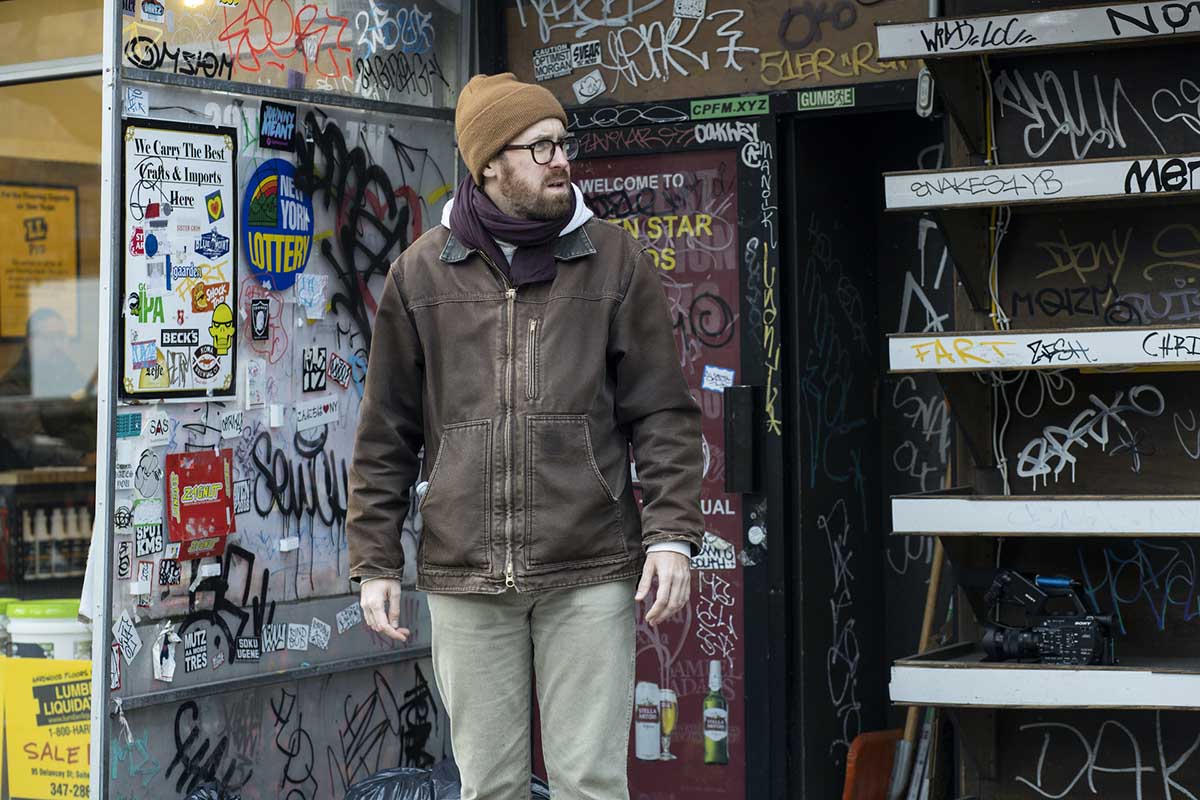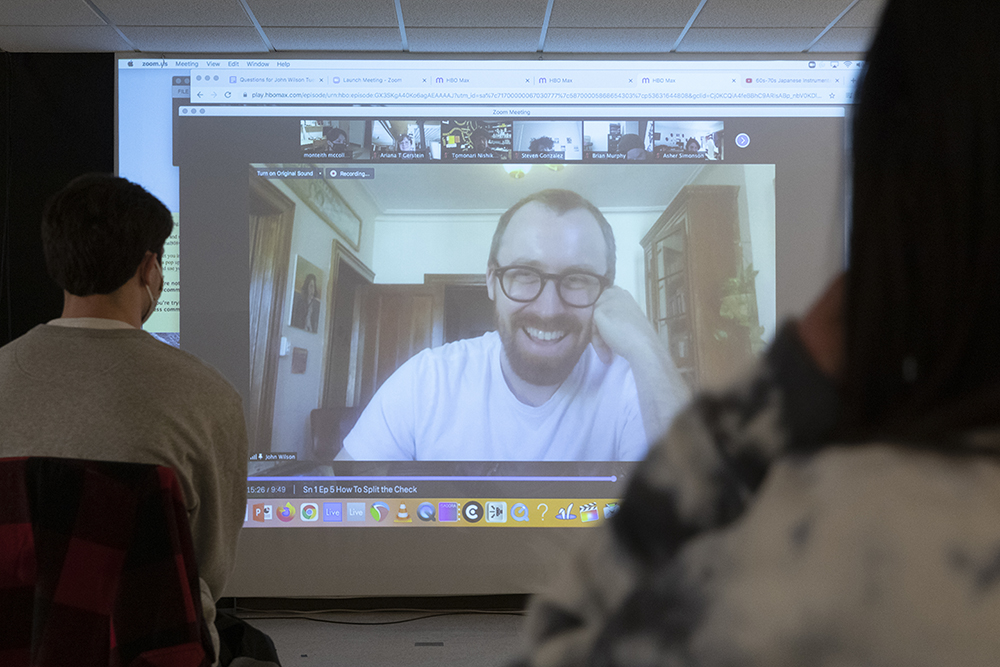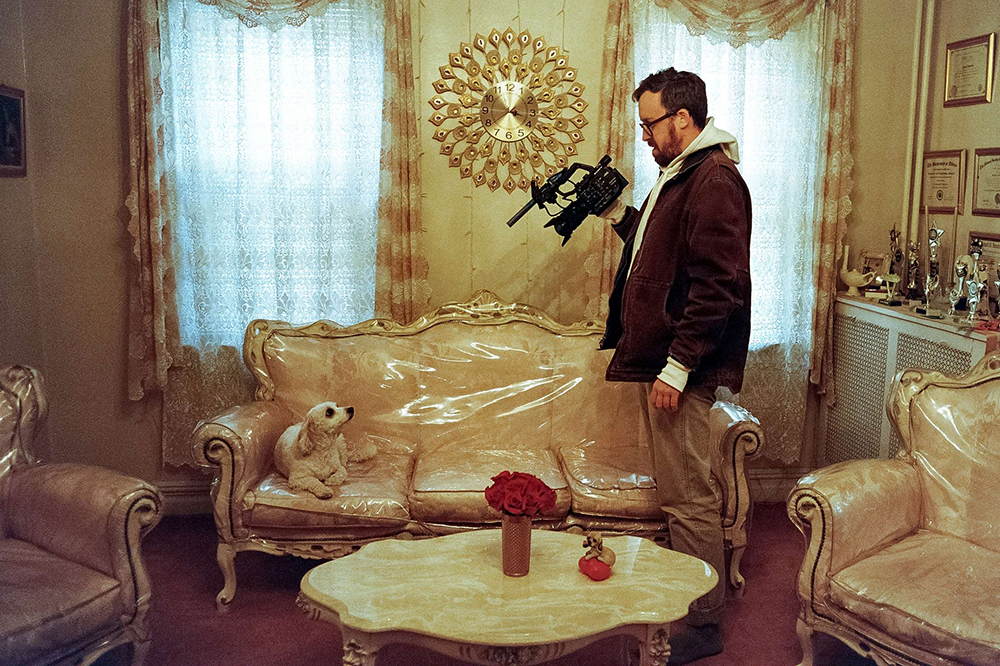How to have a hit show on HBO: John Wilson’s cinema education at Binghamton University
Wilson graduated from Binghamton University in 2008 with a degree in cinema

John Wilson ’08 was so eager to see the premiere of his HBO series that he checked into a nearby hotel to watch it in real time.
“I wanted the experience of watching the last 10 minutes of Bill Maher before my show came on and to see the commercials for it,” Wilson says. “I feel like that experience is disappearing: the rigidity of a broadcast schedule. I wanted to watch it natively.”
The docu-series, How To with John Wilson, features the filmmaker/writer/narrator attempting to give advice on one real-life topic per episode while talking with — and learning from — fellow New Yorkers. For example, the episode “How To Split the Check” developed from friends taking Wilson out for a birthday dinner. Wilson turns his attention to the question of fairness and ends up at a referee equipment store — and later a referee association dinner — in pursuit of the answer.
The six 25-minute episodes were televised in October and November 2020 and can now be streamed on HBO Max. How To with John Wilson has not only earned praise from critics and audiences alike (a 100% critics score and a 92% audience score from Rotten Tomatoes), but Wilson has appeared on talk shows such as Jimmy Kimmel Live! and was recently named to “The Next 100 Most Influential People” by Time magazine.
“It’s surprised me,” Wilson says of the show’s success and his newfound celebrity status. “It’s been surreal. I finished the show when I was stuck in my apartment. And I still haven’t really left the apartment since the show became popular!”
A Binghamton education
Wilson, who grew up on Long Island, knew he wanted to study film after being “obsessed” with the subject during high school. Binghamton University jumped out to him.
“I wanted to pick a school that was economical, but I also looked at the cinema program at Binghamton and got excited about the legacy of its experimental filmmaking and the filmmakers who started it and taught there,” he says. “It felt different. It didn’t feel like a normal film-production program. It was theoretical and experimental. That’s what I gravitated toward.”
Wilson certainly did not enter the Cinema Department with a big ego.
“I made a bunch of bad stuff in high school,” he says. “I submitted one or two to Binghamton and thankfully they saw some potential in my immature high school work.”
As Wilson moved into College-in-the-Woods and met classmates who are still friends today, he also fell in love with the city of Binghamton.
“It was unlike anything I had ever [experienced],” he says. “I grew up in a strip-mall area of Long Island. Binghamton was a playground to me as an artist. I could drive to all of these strange areas with vacant buildings and make experimental films. The whole city was like a set. It wasn’t a city like New York that people had shot the hell out of. Binghamton felt untouched and I found it inspiring. I met characters there I wouldn’t have met anywhere else.”
In the cinema classrooms, Wilson was especially inspired by faculty members such as Monteith McCollum and Ariana Gerstein, who Wilson calls “amazing, kind and thoughtful.”
“The professors at Binghamton beat out of me all of these ambitions to make mediocre work,” Wilson recalls. “They made me ask myself ‘why am I making this?’ not ‘how am I making this?’ That was important.”
Gerstein, a professor of cinema, still shows a film Wilson made as an undergraduate called Looner (about a balloon community) in her classes. Her former student “never did anything halfway,” she says.
“He had very strong ideas about subjects and processes that he would pursue to an extent that isn’t often seen at the undergraduate level, at any level really,” Gerstein says. “He would pursue his ideas fully, regardless of difficulty or any discomfort he might feel. Students often film situations and people that they know and feel comfortable with already. John would seek out the unknown, working with strangers and difficult situations. He pursued these with a lot of care and sensitivity.”
McCollum, an associate professor of cinema, says Wilson had “a playful curiosity and willingness to embrace challenges” as a student filmmaker.
“It was refreshing to see someone run with an idea and literally see where it led them,” McCollum says. “I believe a big part of this attitude has led to John’s success. He not only knows how to conceptualize a work, but he understands the layers of emotional underpinnings in character and story.”
Wilson took his first documentary class with McCollum and says it “opened my eyes to the potential of nonfiction film.”
“I was all about fiction until that point,” Wilson admits. “That class got me excited about making good work for not a lot of money.”
Building a series
After graduation, Wilson worked for a private investigator and shot infomercials before developing short “how-to” videos that appeared on Vimeo.
“I was prepared to make these movies by myself for my entire life,” he says. “I had no problem with that. Then I met [comedian/writer] Nathan Fielder in a restaurant in [2018]. I was a big fan of his and was kind of intimidated. He had seen my work and we hit it off. We developed a pitch — a more ambitious version of my short films. We shopped it around to a few networks. HBO liked the pitch and greenlighted the pilot and then the series.”
There are several ingredients that make How To with John Wilson one of the most distinctive shows on television. It can move effortlessly from comedy to poignancy. Wilson’s interspersed footage ranges from old storefront signs to a skunk stuck in an ATM entry to actor Kyle MacLachlan struggling to make his Metro card work.
Wilson is also an “every-person” narrator: His unpolished delivery is full of pauses, stumbles, self-doubt, anxiety and humor. He is rarely seen in the episodes (an occasional mirror reflection, an old photo or a shot of the foot), but the viewer learns more about his life as the episodes proceed and the pandemic arrives. The season finale, “How To Cook the Perfect Risotto,” sees Wilson learning to cook a dish for his elderly landlord. (He affectionately calls her “ma-ma.”)
Perhaps most important, Wilson thrives as an interviewer. Random encounters lead to longer sessions with his interview subjects. A discussion about humankind with a pro-wrestling fan outside an arena reveals a man who claims to catch child predators. Naturally, Wilson heads to the man’s Pennsylvania home to spend a day with him.
Wilson treats his interview subjects with kindness and respect, no matter how absurd or startling their comments may be.
“I find it sad that my approach is the abnormality,” he says. “It doesn’t take much to interview people like this. You just have to be a good listener and have a genuine curiosity about what they are saying.
“I get bummed out watching reality TV or other documentaries where everyone is stuck in these binary relationships: This person is good and this person is evil. That’s not who we are. We live in a gray area in the middle. Exploring that is more interesting than forcing clichés onto people’s relationships. I just let the camera roll.”
How To with John Wilson has been picked up by HBO for a second season. Wilson, who hopes to have the season finished by the end of the year, has continued to keep his camera rolling during the era of COVID in New York City.
“The pandemic sucks, but I feel fortunate that I have the opportunity to document New York City during this ephemeral time,” he says. “It seems like it will last forever, but it won’t. So much of my favorite art takes place in the middle of major historical moments. Take the footage of 9/11: We see the towers falling, but the most interesting [footage] is home video of someone in their apartment cooking while the towers fall three blocks away.
“The intimate things are so captivating. That’s what I’m trying to capture now. I feel I have a responsibility to document as much of New York City during this period as I can.”



